Composting Oak Leaves
I have lots of oak trees. I researched and discovered that these leaves are slower to break down. How much slower are we talking about? It's been 6 months or so, and besides the oak leaves everything is almost done. I have been using the mix as-is, but the leaves make it too fluffy to pack down properly when I am planting. Should I avoid adding oak leaves to the compost in the future, or if I can get the pile hotter will they break down faster?
Thanks!
Melissa
Comments (89)
Lloyd
13 years agolast modified: 9 years agoHi Robert...you forgot the coffee warning. ;-)
Good to see you again.
Lloyd
rfonte649
13 years agolast modified: 9 years agoAfter the 1st turn, the mesophilic microbial community takes over, and after the 2nd turn, the pile will not heat up past 104F ever again no matter what you add/do to it.
I have added alfalfa cubes, (wet of course)and had the pile heat back up to 153 degrees.Related Professionals
West Milford Landscape Architects & Landscape Designers · Saint Charles Landscape Architects & Landscape Designers · Sahuarita Landscape Architects & Landscape Designers · Allentown Landscape Contractors · El Mirage Landscape Contractors · Fort Payne Landscape Contractors · Mastic Beach Landscape Contractors · Seymour Landscape Contractors · Uxbridge Landscape Contractors · Wethersfield Landscape Contractors · Fort Pierce Decks, Patios & Outdoor Enclosures · Palm Beach Gardens Decks, Patios & Outdoor Enclosures · Sugar Land Decks, Patios & Outdoor Enclosures · Urbana Decks, Patios & Outdoor Enclosures · Watauga Decks, Patios & Outdoor EnclosuresMsShelley
13 years agolast modified: 9 years agoVery nice soilguy, thank you for the information. I have one question... My compost pile is comprised of: a majority of oak leaves, grass clippings, vegetable matter, flower parts, Podocarpus leaves, and water. I have started this pile about a month ago. "At what point does one start a new pile and allow the first pile to mature?"
toffee-el
12 years agolast modified: 9 years agoOn chlorinated or chloramine water, would adding de-chlorine/chloramine chemical as used in home aquarium hobby help? Products like Amquel or Prime?
+++
Products such as Amquel or 'Prime- (Removes ammonia, chlorine, chloramines, ammonia)' will remove the chlorine and neutralize the ammonia (and more). Prime is made from Hydrosulfite salts which are basically non toxic reducing agents made up of bisulfites and hydrosulfites, aqueous solution, buffered at pH 8. As mentioned earlier, reducing agents are basically non toxic at reasonable doses to fish and aquatic animals.
+++Here is a link that might be useful: Prime
Kimmsr
12 years agolast modified: 9 years agoMsShelley, I start a new compost pile when my first one is 4 feet high. In years past I have had compost piles that were 6 feet by 6 feet by 45 to 60 feet, but keep myself content today with 4 x 4 x 4 compost piles.
I have not forgotten anything that SoilGuy wrote although I seldom write that because I have found that most peoples eyes glaze over when you start that kind of discourse.patbrown
12 years agolast modified: 9 years agoI used to use yeast(the kind for baking bread). You can get a huge bag in Costco or Sams for under 4.00.
Kimmsr
12 years agolast modified: 9 years agoWhile bakers, or brewers, yeast may supply some food for the bacteria that digest the materials being composted it really does not help with the process. The best way to make sure your material gets digested is to supply the aerobic bacteria with the food they need, in the proper proportion (C:N ratio) with just enough moisture, and the volume they need to work.
henshaw21
12 years agolast modified: 9 years agoWhat was meant by "Hi Robert...you forgot the coffee warning." a few posts up? I use several gallons of coffee grounds mixed with my shredded oak leaves in a 3x3x3 bin. Is there an issue with using coffed grounds?
barepocket
12 years agolast modified: 9 years agoHello everyone I'm new here take a little easy on me
But my question is I live in Tampa Florida and going on 62 years old I'm tired of raking leaves.
My soil in sandy with little nutrients in it as far as I know, that the problem I want to take my leaves each year and chop them up with my lawnmower I read somewhere else by doing this the leaves will in rich my soil but with this hard sand will I need a tiller which I can't afford right now
Also this year I'm building a compose bin from chicken wire but I thinking of piling my leaves up in the corner of the yard yard and rotating the pile as much as a can I have plenty of worms that appear under my leaves from nowhere which is good
So if anyone can help with the question of incorporating chopped leaves into my soil I would greatly appreciate it
Thanks
BarepocketKimmsr
12 years agolast modified: 9 years agoThe leaves that fall from the trees in my yard, Maple, Oak, Hackberry, Crabapple, Black Walnut, Sumac, Chokecherry, Apple, Plum, Nectarine, Purple Leaf Plum, all get mulch mowed into the turf where they fell and within days are chomped up by the Soil Food Web. Worm casting galore appear in the fall where those leaves have been mulch mowed in and the fololowing spring the grass in those areas grows in greener, thicker, and faster then other areas that don't get leaves mulch mowed in.
wertach zone 7-B SC
12 years agolast modified: 9 years agoBarepocket, the leaves will help a lot. Since you can't afford a tiller, I would just chop them up and leave them in place and/or put them where you need them.
They will help break up the hard sand and improve your soil without tilling them in.
I bought a leaf-vac shredder that attaches to my lawn mower in 2010. I just vacuum the leaves and spread them on the garden. My soil is much looser and darker this spring. I can dig down 12" or more with just my hand this year.
All of them haven't decomposed, but to me that is easy mulch.
Kimmsr
12 years agolast modified: 9 years agoTree leaves, organic matter, any vegetative waste will fill in the pore spaces that exist between your sand particles and aid in holding both moisture and nutrients in the root zone of your plants which will help those plants grow.
jrmckins
12 years agolast modified: 9 years agoI didn't read everything but:
1. to shred leaves you could just use a mower with a bagger. Mow them up, dump the bag into the pile. You get the added benefit of mixing some grass clippings into the shredded leaves
2. sift the compost. Build a cheap sifter that will fit over the top of your wheelbarrow. Shovel on some compost, sift out the bad stuff and dump it back into the pile. Use the sifted compost that's in the wheelbarrow.Ahmad Salem
7 years agoThe best way is to shred the leaves and use them for chicken or cows beddings then after compost the whole thing.
idaho_gardener
7 years agoI'm reading 'soilguy's post from March 3, 2011 and I'm sure he knows a lot but I have some doubts about some of the currently held wisdom. First of all, almost nobody, with the exception of Lloyd, mentions fungi and their role in decomposition. I have personally seen my compost piles get up into the 185 F. range and have doubts that it was bacteria that was causing that.
The other frequently repeated 'fact' is that you need a mix of 'greens' and 'browns' to make a compost pile work well. The regulars have heard me relate a story about making a compost pile (really it was a little windrow) of nothing but shredded oak leaves. It got hot and stayed hot for quite some time. And that 185 F compost of mine was made of the first cut of grass in the springtime. I have also seen chipped/shredded branches and leaves from an apple tree get so hot so fast it was shocking. It was something like an hour.
Anglophilia
7 years agoTwo feet of oak leaves in the fall, topped with 3-4 bags of manure. Grass cuttings all summer on top. Turn it and you gave great compost and can start all over again.
daninthedirt (USDA 9a, HZ9, CentTX, Sunset z30, Cfa)
7 years agolast modified: 7 years agoAgree with idaho_gardener about effective almost-hot composting with nothing more than shredded oak leaves. My pile was getting to 155F. After a week of that, I turned it, and the temperatures were lower, but the pile was still cranking. No question that adding nitrogen sources will accelerate the activity, but the idea that you NEED "greens and browns" (I really dislike that inaccurate simplification of proteins and carbs) in order to compost is simply false.
soilguy
7 years agodanithedirt and Idaho-gardener:
You may not need to get a cup of coffee before reading this - but will try to be succinct as possible. First, I'm (The SoilGuy) an aerobic freshwater practicing soil/plant MICROBIOLOGIST operating my own composting research facility (and microbiotics lab) for over 3 decades. I'm a professional composting scientist/researcher with a very high global reputation.
There are two very important microbiological terms used to describe the composting process:
DENSITY - regarding the high number of microbe organisms that actually performs the saprophytic 'work' in creating compost - turning organic MATERIAL (original form) into organic MATTER (OM) - which requires both bacteria and fungi in high density (i.e., HOW MANY microorganisms are at work - as well as others such as microarthropods..
DIVERSITY - is the 'spread' of different SPECIES of bacteria and fungi, etc., i.e., WHAT KINDS of organisms at work - that operate within their particular heat range.
Fact is, that high heat (over 155F) due to exponential reproduction of thermophilic bacteria is quite detrimental to the quality of both Density and Diversity - in that the higher heat kills the majority of MESOPHILIC microbes that actually do the majority of the biological work to make HUMUS - (the end result of microbiological decomposition) - which is NOT compost - but all compost should contain some Humus to be of high quality. The percent of Humus (an amphorous [sticky - without shape] product) determines compost QUALITY from a plant-nutrient-availability perspective, since that substance holds many more (diverse and dense) plant nutrients than ANY other constituent of OM.
The issue is, that a high-heat compost pile must then take time (several months) to rebuild the mesophilic population that operates in the 80F to 104F range. Sure, high heat can kill pathogenic and insect organisms - but also kills the 'good guys' that do most of the work. Thermophiles consume the sugars and starches in a pile very fast - but then, there is little left for the mesophylic microbe community to utilize.
Excessive heat dissipates nitrogen in air (it is volatile) and also dries out the materiial - and without adequate moisture INSIDE the material - decomposition will simply cease, because microbes do NOT breathe air. Their oxygen is derived from the dissolved oxygen WITHIN a water molecule.
The focus on attaining high heat is very much misplaced - when considering the entire decomposition process and desired end result. For organic material to be transformed into organic MATTER requires NO HEAT above 104F. The high heat necessity issue is propagated by COMMERCIAL composting operations that MUST focus on killing pathogens - because the commercial method PROPAGATES a high quantity of pathogenic microorganisms due to their MSW collection methods. In a 'backyard' operation that does not input such nasty 'stuff' as a commercial operation does - attaining such excessive high heat is NOT necessary - it is a BAD thing.
Nature KNOWS what she's doing. Man does not - UNLESS man understands how Nature works. It is quite evident that you and Idaho-Gardener do not. It is my hope that y'all will take some time to learn the basics of microbiology and organic chemistry to facilitate making compost that plants can use better. After all - it IS for THEM. So learn to so it to facilitate THEIR needs by composting NATURE'S WAY.
floral_uk z.8/9 SW UK
7 years agoWhat what a relief. I can stop feeling amateurish and inadequate with my pile it up and let it rot 'technique'. Somehow it's provided compost for my allotment for decades. Interestingly the pursuit of heat doesn't feature much in composting advice on this side of the pond.
daninthedirt (USDA 9a, HZ9, CentTX, Sunset z30, Cfa)
7 years agolast modified: 7 years agoThank you, soilguy. Nice writeup. As I understand, the value of high heat to me is that it kills weed seeds that accumulate in "back yard stuff" Of course, in shredded leaves, the threat of that is small. I apologize for my misstatement. I said my compost pile was reaching 155F. In fact, it was reaching 55C=131F which is pretty much within the range considered widely acceptable (see for example, the excellent Cornell Waste Management Institute composting guidelines - you can argue with them). Actually, I do understand quite a bit about how nature works (and I don't capitalize "nature"). I should add that no one here needs demeaning lecturing. That is most evident. But your post is instructive.
wayne_5 zone 6a Central Indiana
7 years agoI have a couple large oaks, a couple sugar maples, a tulip, a sycamore, some English walnuts, a couple pecans, a couple black walnuts, and 3 lindens.
The black walnuts fall early and disappear before leaf season. I also get some oak leaves from a monstrous bur oak from a neighbor and some leaves from along a woods.
I used to pile them up in a great pile. Some of the pile stayed dry down in the pile and that wasn't so good.
Anymore, I just throw them into windrows with the riding mower; , back through them some, and then keep throwing them into a smaller row until they are a 6 foot round pile of very finely chopped leaves that are scattered on the garden beds. They stay put and break down easily over winter and early spring.idaho_gardener
7 years agoHi soilguy,
Thank you for taking the time to discuss the 'cons' of high heat. From re-reading my post I can understand why you might think that I consider high heat a desirable thing. My intention was to point out to others that the dogma of needing to mix 'greens' and 'browns' to make a compost pile heat up and decompose is an oversimplification. I was also trying to call into question the idea that it is just bacteria that is doing all the heavy lifting in a compost pile. And I have heard precious little from the so-called experts about the role and processes of fungi/yeast in compost.
Other elements of compost dogma;
Don't cover a pile because 'it needs air'. Overstated at best.
Plants don't like raw compost because it robs nitrogen from soil. I suspect that it's the phytotoxic short-chain organic acids causing the problem.
Wood mulch suppresses weeds by smothering them. See above.
Wood chippings won't heat up and make compost because they need 'greens' like grass clippings. I was amazed how fast chipped tree prunings heated up. I suppose that tree branches harbor a uniquely diverse ecosystem and chipping the branches causes a bloom of activity.
I have heard the saying; "The worst part of ignorance is not so much what we don't know, but that the things we think we know are just plain wrong." This is especially true for so-called experts. Medical professionals are the worst offenders of this type of ignorance, but they are, by no means, the only offenders. A degree of humility is always a good thing.
Which brings me back to one of my original points, people need to try things out for themselves to see what works. I love to try new things, make observations, and then come to places like this to discuss my results.
Again, it's nice to have a scientifically trained professional provide some badly needed detail about aspects of composting. Thanks.
Paul M.
daninthedirt (USDA 9a, HZ9, CentTX, Sunset z30, Cfa)
7 years agolast modified: 7 years agoIt is well understood that dry leaves have little nitrogen because the proteins that were in them when they were green were, as part of the process of leaf senescence, returned to the branches of the tree. That's why hay, which is harvested while green, is a more potent source of compostable nitrogen than straw, which is harvested when dry. In principle, you might therefore expect that bare branches, in winter time, after leaves have fallen, might have a goodly amount of proteins and nitrogen. Looking at it that way, wood taken at the right time of year might compost more aggressively than wood taken at the wrong time of the year. Has anyone scoped that out?
By the same reasoning, one might think that evergreen wood might be lower in nitrogen than deciduous wood.
soilguy
7 years agoHi Lloyd -
Have much appreciated the many chats between us - and am very happy to find that you're 'still kickin'.
Am still using the same 'handle' that you and a few others helped me decide on - so long ago...
It's my practice NOT to 'do' forums - but after 5 years absence, thought I'd 'pop in' for another short look and put in my "two cents" worth.
As you know, I research how to successfully develop better organic chemical & microbiological methods & products for soil and plants.
But forums are not an acceptable places to discuss compost research work - or even the findings and/or conclusions.
The vast majority of 'organically-minded' folks on forums - are not inclined toward research - are content to only presume - and/or ask questions of noone who can (or is willing to) provide answers with any real depth of discovery...
As has been said: the eyes (of bystanders to science) tend to 'glaze over' before a desire to understand relevant 'connections' is made.
There are NO 'simple' answers to the inner workings of Nature's synergysm - which IS what folks want - who frequent forums like this - to learn mistakes.
I capitalize the word Nature for the same reason I capitilize the word God.
To KNOW either, requires 'getting VERY close'. But that takes persistence...
Kinda like Catholic precepts - that it's OK to let a Priest be a 'stand-in' (the middle-man) and so be content to "get by"... relying only on 'obedience'...
In like manner - I tell my students: it's not needful to understand to my level of science per se - just be sure to follow the BEST PRACTICES science reveals.
But no - most would rather 'experiment' haphazardly - not even taking notes.
I say: If you have difficulty - describe the issue scientifically - and ask for help.
The SoilGuy's .com email address is not hidden - but very few who find it - are willing to read/accept results/conclusions - in faith - at 'face value'. But they won't read the research that was done to arrive at such conclusions - either.
Which is the main reason our planet is presently in its VERY bad ecological 'position' - hardly anybody "lookin' out for 'Mama".
Because greed rules this present world. Corporate profits being more important than even maintaining a safe place to live/work in/on...for our kids.
Here's wishing you and yours the very best - and many more years to enjoy the fruits of your labor...
Robert
Lloyd
7 years agoHi Robert
Not sure why you addressed that reply to me, I haven't posted on this thread since 2012. Having said that, I'm in the camp that really doesn't care how composting works as long as it works. I'm also of the opinion that if a person is having fun doing what they're doing, who are we to say they can't.soilguy
7 years agoLloyd -
Because I wanted to find out if you were still watching this thread.
A good 'camp' to be in - where most folks in it - don't know if compost is 'working' or not - (other than if it gets hot) or as well as it should - or could. Fast and high quality results are important to some - not most in that camp.
Then there's another camp 'closeby' - less-populated - by those who care more about how well and how fast - and how does one tell? As said before - there's no such thing as any two compost piles being precisely the same. Ever. Always different in some way - as science proves. Compost science is different than the ART of composting - but the two can coalesce quite nicely... At any level of interest.
Physics - Chemistry - Biology - Microbiology + Art. Interesting for some folks - boring for others.
Yes - Neither of us have ever said: "can't or shouldn't have fun". If a hobby isn't fun anymore - should find a new one that is...
Different strokes for different folks. I like to 'hang out' with folks that have fun with composting like I do - seeing results (in compost/soil/plants) often improve in some way - and knowing in which way - and why. That's what makes me a researcher of reknown in this field... But not many people care - and that;s OK. There's enough. Not many top-notch experts in other science skill sets either.
But in Art - everybody's an expert. Because everybody's different. Physics isn't.
Robert
wayne_5 zone 6a Central Indiana
7 years agoI do a fair amount of composting in situ. I chop up and after a while work things in a little ways. I am happy with that. I may have some horse manure with a lot of hay in a pile for a while.
rayzone7
7 years agolast modified: 7 years ago"Holy cow". that was a lot of "quotation marks" and "bold font." I don't even see a "bold font" "button". 'Single quotes'. "Double quotes" and 'mixed quotes"...."oh my!"
toxcrusadr
7 years agoIt would certainly be news to me that fungi create the heat in a hot pile.
I am agreeing more and more that slow composting is better in general as it causes less loss of nitrogen and perhaps carbon as well (which would otherwise become humus). Particularly with brown leaves and wood, which as I understand it are first broken down by fungi. I do leaf piles where I have space, both at home and my rural wooded property.
Which brings me to one reason people like hot composting: it's fast. In the crowded suburban yard this is an advantage. When you're trying to convince newbies to start keeping all that stuff in their yards, it's a selling point. As is the 'mix greens and browns' mantra because it helps avoid a wet stinky high-nitrogen pile as well as a slow pile which is seen by the neophyte as a failure.
The question is how to get these messages of 'advanced composting' to people who have had some experience. They don't tend to come back for lessons. It's not like skiing where you show them to snowplow and then they come back to learn parallel skiing.
soilguy
7 years agoThis is a 'get coffee first' compost training message you can pass on if you like...
Try putting this message on http://forums2.gardenweb.com/forums/soil/ and see how many BS replies you get... (to compare with replies on here, about this one).
That should answer your question to some degree...? Take good ones on - as your students. I'll back you up as one of your 'go to' support guys.
Yes, toxcrusadr - thermophilic fungi certainly do exist - but only product-soil/media/compost microbiologists (such as myself - who have such interest) are able to determine (by direct microscope observation) the density and diversity of such fungal microorganisms at work in a given pile.
A certain "window of carbon-to-nitrogen (C:N) ratio is required for any given pile to attain a given amount of heat - which can be regulated by manipulating the C:N ratio of the total feedstock component(s) in a pile. Learning how to accomplish such feat has been a long-term project at my private research facility/lab.
The US government (USDA) and State compost regulatory agencies have established 131F (maintained for 3 days) - as the HIGHEST heat/time necessary to kill weed seeds and pathogenic microorganisms in a compost pile. 140F is my target heat generated by thermophilic microorganisms (produced by the energy of exponential reproduction & other factors - including bio-compression).If a pile exceeds 140F, I open the pile and over the 3-day period, may also irrigate to cool it. But a pile constructed with a C:N ratio to not allow EXCESSIVE high heat (over 145F) to occur, saves considerable time and effort.
Fact is, the total feedstock volume of ANY given pile does NOT achieve such temperature throughout. Such heat is created in 'pockets' called "cores". Heated air ALWAYS rises, so a column of feedstock above that core will also likely attain close to the core temperature (unless deep in the pile). The periphery of a pile - and usually the lower areas of a pile ALMOST NEVER achieve high-core temperatures due air coolinig and the higher moisture levels lower in a pile.
IN GENERAL, the top 1/4 of a pile depth will carry about 40% moisture - the next 1/4 of pile feedstock below, will maintain 50% moisture, with the 3rd lower quarter of volume at 60% moisture and the lowest 1/4 of pile volume will not carry more than 70% moisture - SO LONG AS the pile drains properly (piles that 'sit' in a pool of water will usually go anaerobic - to the degree that they get smelly over time). So the necessary re-mixing the pile feedstock to release built-up CO2 and re-moisten to attain a relative heat (a process called "turning" is the normal method to ensure that thermophilic heat develops in most all material.
Such turning process requires moving pile material from outside (periphery) to an inside location in the next pile - along with a top-to-bottom movement of material. Which can only easily be accomplished by turning pile material into a new (preferably a bin) location using a coarse screen (usually a section of framed chain-link fencing) to remove coase material for particle-reduction and placement into the next New-Build pile).Such turning moves material from an initial "New Build" stage to a "UNStable" stage (just following the 1st turn) - during which the thermophilic microbiology has a '2nd shot' at the previously "unheated" material. So just after the first turn, heat is expected again to rise near the 131F baseline heat - but not much higher, since the prevously-heated material is incapable of re-heating (since the sugars/starches) in it have already been consumed.
So the 1st-turned pile then (after 3-4 weeks) normally achieves "Stable" status - without major risk of the material heating again - except in some small areas - depending on how well the pile material was 'broken up" (usually by putting it through a smaller sceen [2" x 2"] placed over the chain-link frame on top of new pile location) into which the unstable [initial pile] compost has been transferred. Below is a list of STAGES in which a 'normal' compost pile would be taken - PER: SoilGuy 'Intensive Management' training classes/courses.
3-4 weeks is the 'normal' time between turns - based on the build-up of CO2 in the pile - which must be re-aerated and re-moistened. However, use of Aerated Static Piles (ASP) is becoming more common - and under SoilGuy tutelage, ALL piles beyond Stage 5 are intensively-managed under ASP conditions - and some students elect to move to ASP after Stage 3.
That being said, The SoilGuy will train physically handicapped composters how to ASP at Stage 1 (NewBuild) - that are not able to physically turn a ton of pile material within a few days - so the only heavy physical work under an ASP regimen, is the initial NewBuild and the Harvest at Mature or Aged Stage - which can be accomplished over a long period.
1). NewBuild-to-UNSTABLE (new "hot-batch" pile construction - considering it to attain a minimum of 3 feet high with appropriate C:N ratio as well-mixed/small particle/well-moistened feedstocks) Humus content: none
2). UNstable-to-STABLE (after 1st Turn) - screened via section of 3" x 3" chain-link fencing (still in heat management mode) Humus content not measurable
3). Stable-to-FINISHED (after 2nd Turn) - 2" x 2" fencing placed over the chain-link screening tool (available for incorporation as a garden product-soil amendment) Humus content: 0-2%
4). Finished-to-MATURE (after 3rd Turn) - 1" x 1" fencing placed over the chain-link screening tool (available as amendment to make planting dirt for planter boxes or other containment) Humus content 1-4%
5), Mature-to-AGED (after 4th Turn) - 1/2' x 1/2" hardware cloth placed on the chain-link screening tool (available to make containerized potting media) Humus content: 2-6%
Note that as Aged compost, the total volume (from NewBuild) has decomposed/shrunk to about 50% of original volume.
Stage 5 is the extent of SoilGuy compost training - except to Advanced Students - who desire to continue the process - training with a Light Microscope is required thereafter.
6). Aged-to-HUMIC (5th Turn) - 1/4" x 1/4" hardware cloth device is used. Humus content: 5-9%
7). Humic-to-HI-HUMIC (6th Turn) 1/8 x 1/8" stainless steel sifting material is used. Humus content: 7-15%
8). HI-Humic-to-"Special-Use" (7th Turn) Humus is amphoric - meaning it has no shape. Compost that attains higher than 8% gets to be very STICKY-feeling stuff
(lightly-sprayed with dilute muselage glue). Humus is one of the most complex molecular structures known to science - and is THE best plant-growth stimulator known to man.
And you are correct in your question regarding how to best 'get the word out' to folks that "...don't tend to come back for lessons".After 'butting my head' on that "wall - I came to the conclusion that a forum is not a worthwhile venue to teach the science of composting.
Below is a statement that you can find 'way down' on my website Home page:
But '''don't get me wrong'''. Online forums can be fun, and even worthwhile, some of the time. My favorite composting forum USED TO BE http://forums2.gardenweb.com/forums/soil/. I think SOME of the people who make a practice of fast-rotting dead stuff have the best sense of humor of anybody. Anyway, after attempting to get composters (who claimed they were "serious composters" on that forum) to recognize the blatant MYTHS that were perpetuated on that site - I gave up attempting to 'compete' with the people on that forum who made it their 'project' to be counter-productive (science-negative) in defense of their "right" to disagree on the basis of NOTHING except their own unsubstantiated opinions. So if you are serious about composting, be careful '''not to believe''' whatever you read on forums - there's more ''BS and myths'' 'thrown around' on such forums than you can 'shake a stick at'.
Best to just locate a composter with more that 5 years continuous experience to study with. If that composter does not use a Light Microscope in his hobby - he/she soon becomes quite limited in training to even the semi-advanced level - because he/she has no idea of the density/diversity of the microbial community that is working to decompose that pile.When you use compost as an amendment to grow plants - it is the microbiology that determines how much plant-available nutrition is available in it. The majority of 'backyard' compost is good - but just because somebody calls it "compost" doesn't automatically mean that it's "good stuff" for plants to grow in. You should know how the material was managed.
The majority of commercial compost from LANDFILL operations is NOT good for growing plants in it - because of bad management practices. Which I know, from researching several landfill organizations from the 'inside' as a Consultant. But there are many good non-landfill composting busiesses - such as Organics By Gosh near Austin, Texas (I consulted with the company owner to improve his business).
BTW - bolding, italics & underscore can be made with keyboard strokes (Ctrl+U, etc.)
soilguy
7 years agoBTW, toxcrusadr - you have permission to edit the information in the message above, however it suits you - or just write one for that forum from 'scratch' - curious what your results will be... ( pile heat is mostly from bacterial thermophiles).
jolj
7 years agoThe "Urban Farmer Curtis Stone" use a tiller to form his 30 inch & he grows year around. I think tilling compost into bed with or with out whole leaves will work just fine for me too.
idaho_gardener
7 years ago
Live and learn, right 'toxcrusader'? For me, I don't just come here to share what I know, I come here to learn. Perhaps you've learned a couple of things today?soilguy
7 years agoEVERYBODY is an 'expert' at managing their own compost operation and garden(s) - so it is solely THEIR responsibility for how they manage/use them.
Here's some advice:
Regarding the tilling-in of LEAVES: shredded or whole - UNLESS those leaves have been PRE-SOAKED in water (preferably as a 5% diluted solution of low-salts nitrogen) it will be difficult to effectively moisturize the leaves underground - for effective timely decomposition - unless your growing media is too wet.
On the other hand, IF the intention of tilling-in DRY leaves is to increase aeration/percolation - leave them dry so they will NOT decompose quickly
IF the tilled-in COMPOST is STABLE (all heat potential gone) at minimum, it's no longer a potential threat of damage to plant roots getting too hot (still, some 'clumps' may get too-warm for tender new roots to grow into) then such early-stage compost will eventually do its nutrient-cycling job.
However, compost matures MUCH FASTER being managed in a bin - rather than being spread out/buried - and the issue to consider is that STABLE compost does NOT provide ANY plant-available nutrient-cycling because the mesophilic microbial community (that does the majority of decomposition) is not yet well formed - ESPECIALLY if a high heat (over 135F was developed in the initial (NewBuild) and/or subsequent 1st turn (Unstable-to-STABLE) piles - since the mesophilic community has not yet 'rebounded' from being killed by high heat and excessive CO2 produced by such heating.
Nutrient-cycling begins at the FINISHED stage (about one month AFTER the 2nd turn) because the full community is SYNERGISTIC - and that synergy (cooperation by a highly-diverse set of microbes) is in 'full-swing' development one month after the 3rd turn (IF turns are made on time before CO2 build-up gets to high to drive microbes into dormancy and the pile maintains consistent sufficient moisture).
My advice is to wait to incorporate compost into garden dirt as at least MATURE before incorporating into product-soil (see numbered list in the post above), because the incorporation process severely INCREASES the time needed for the synergistic microbe community to become fully capable of nutrient cycle production.
For example, there are folks who bury raw feedstocks in the ground (called 'Trench' or 'Lasagna' composting) - but depending on product-soil temperature/rainfall, soil pH, etc. - it's normally one YEAR in the ground before planting on top of the trench - to achieve full nutrient-cycling capability to grow plants without having to use additional fertilizer.
Remember that the newly-arrived (to the US) Mayflower/Pinta/SantaMaria community learned gardening from local American Indians who buried ears/husks of corn (and other kinds of organic material) in the row - to provide plant-available food from decomposition of them - THE NEXT SEASON. The first year of planting in a newly-formed row, the crop depended on the nutrients (minerals) already in the new ground - and as all gardeners know - plants REMOVE minerals from the ground so they can grow - which was then supplemented anew, by the raw organic material they planted under each crop of the NEXT-season seeds.
In other words, plant nutrients to grow crops came from the decomposed Organic Material (OM - which with decomposition becomes Organic MATTER) that had been buried in a seed-row THE PREVIOUS SEASON.
Here's an interesting side-note. When I say "raw" organic material, I do not mean in "ready-to-eat" form. There are those that talk about using human urine on their compost piles and garden dirt. Yeah - serious about it too. And y'know - THEY ARE CORRECT - but urine is high-salts so should be diluted first. IF one thinks they are a researcher like me - then research this:
1). What year did the organized collection of human urine begin in the USA - which people SOLD to the collector for its nitrogen content - and how much $$ was the 'goiing' price for urine at the end of that first year - in any given large city?
2). What kind of containment did the what tribe of American Indians (that taught the early Pilgrims how to garden) commonly use to urine-soak their soon-to-be-buried organic materials - and what kind of instrument was used to extract the coarse OM from the containers prior to planting it in the furrow (soon to become a mounded row)?
The prize for the first person to post the correct 5 answers to both numbered questions - I will train them to compost OR vermicompost FREE for one year - via back'n forth emails & phone calls with photos. If all 5 are not correct - I will either ignore the posted answer attempt to answer - or post a "no" response. Am quite busy with a global research project, but will do my best to view posts at least
each week.
3 months after posting this challenge (April 21st) - If nobody has posted the 5 correctly-named answers - I will post them in this feed - to end the contest.
jolj
7 years agoSoilguy you are not the first person on this site to say "it dose not work that way".
All I can tell you is that I have seven compost piles & I still turn under leaves that was last years mulch or bagged this year & have no problem with the break down.
Maybe I have magic loamy soil, I doubt it.
http://forums2.gardenweb.com/discussions/1637253/compost-start-with-coffee-chaff?n=8
Tristan
6 years agoI have a similar question about oak leaves. I am going to ask my question in Long format and maybe if I'm lucky someone will have some suggestions...
I'm a new-ish hobby gardener. Moved into this house in the SF bay area (zone 9) about 2 years ago and the soil is awful clay. I have broken at least 4 shovels in it in the past year. I finally gave up and scraped the whole yard clear (except for my young fruit trees around the perimeter) to start over.
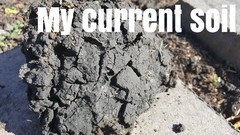
Trucked in what I could afford: 12 yards of nice dirt (compost that began its life as Redwood and manure) and tilled it in. Barely noticeable on my 4000sqft yard, for obvious reasons. Now I'm out of money for this project and I'm trying to work cheap. I procured 20+ yards of lovely oak mulch that's mostly leaves from an arborist.
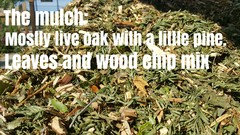
Except for the 20 yd pile, my yard is planted up with clover (mix of sweet and crimson) as a cover crop. It was planted 1 MO ago, so still small. I'm hoping to let the oak leaves sit 6 months until fall, then till in along with the clover, then wait until next spring, then plant it up.
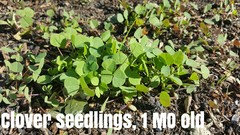
I would love to layer oak mulch with manure or grass clippings but simply cannot. I have no access to a truck to go load manure, and right now, cannot afford delivery. And as for grass clippings, I have no grass nor does anyone on my block (we all tore them out during the drought.) One neighbor has a small patch but even if I add that to the mound, it will be negligible. Same volume issue goes for used coffee grounds from Starbucks which I get from time to time. Or even urine, I doubt I can produce enough to make a dent in a pile this size. Also, unfortunately, I have a bad back and cannot turn the pile. (It almost killed me getting it there in the first place.)
Letting oak leaves sit then tilling them in is by all accounts a no-no, but here's why I want to do it:
1. Free.
2. I assume it's better than nothing, and I'm not in much of a hurry, if it reduces fertility for a while that's OK, I'll fertilize my fruit trees and keep clover (or cardboard, or whatever) everywhere else.
3. I did this before with Great Success. When we first moved in we cut down a live oak, dug a huge hole around it to get the stump ground down, then filled that hole back in with a mix of dirt, the leaves, and the sawdust/ wood chips. I'm not kidding, guys, 2 months later the soil in that hole was like a *dream*, and everything I planted there did stupendously. I planted in it almost immediately because I didn't know any better, but I'm glad I did.
I'm looking for advice about this plan. Should I spray the pile with fertilizer? With sugar? Keep it covered? Introduce mushrooms? Plant it as a hugelkultur in the mean time? Keep it really wet? (we don't see much rainfall here. ) Any advice is most welcome even though practically its hard to do much of anything if it's contingent on a truck, money, or a good back. :/
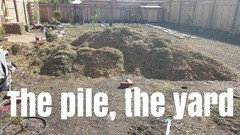
FYI, I don't grow veggies, just backyard fruit trees and hopefully one day flower borders.
CaptTurbo
6 years agolast modified: 6 years agoI had a 20 yard load of wood chips dumped here about a year ago and I used it to cover half of my back yard with a thick enough layer to kill off the grass and weeds. Last Fall I planted a couple collard plants, a purple tree collard, and some Swiss chard in holes I dug in what was previously sterile sugar sand. The results are spectacular! I have been picking, blanching and freezing for several days.
I realize you aren't interested in planting veggies but the take away is that I don't think you need to have that pile at all. Just spread that stuff out in a heavy layer and the magic will happen.
I hope to get another load of free wood chips or perhaps five more. I'm totally impressed at the fertility they produce.
daninthedirt (USDA 9a, HZ9, CentTX, Sunset z30, Cfa)
6 years agolast modified: 6 years agoI see no problem with tilling in oak much. We're talking SHREDDED oak leaves, right? The fertility issue is near term. You'll run kinda N deficient for maybe a year. But if you can afford to wait, go for it. Put N fertilizer on? Sure, that will speed it up. Sugar? You're kidding, right? Mostly, that will just attract bugs. It's one of those things that is cheap, kind to the environment, and doesn't do much of anything, nutrient-wise. In fact, studies have shown that sugar actually reduces N levels.
Yes, keep everything moist.
I use a few yards of leaf compost and mulch every year, and at least half of it is red oak.
I have one bed that I tilled in uncomposted oak leaf mulch one winter and, to be honest, it did great a month or two later. Tomatoes up the kazoo. That bed was in pretty good shape before that, though.
Tristan
6 years agoCapTurbo - I have heard so many good things about thick mulch, and I had planned on doing a mixed method where parts of the yard are covered in mulch, other parts clover, to sort of AB test it. I have a feeling the area I mulch will grow and grow as the season goes on and the summer drought wages war on my clover.
How thick does one mulch for weed prevention? I have tried between 1 and 3 inches in the front yard, but it has little effect on the weeds. Especially Bermuda grass and oxalis, which are my most difficult weeds.
Daninthedirt - I only mentioned sugar because, believe it or not, I have read many posts recommending it to help initial compost activity. Sugar and molasses keep coming up. I swear, gardening is like dieting, there are a thousand different groups, with wildly different theories, each more zealous than the last, and each telling you THIS IS HOW YOU MUST DO IT. It's hard to sort through it all!
And yes, the leaves are nicely shredded, mixed with equal parts fine shredded wood chips/sawdust.
CaptTurbo
6 years agoI think you are on the wrong track in wanting to add things to compost that pile faster. You have some great stuff ... almost too nice. You need a bunch more. We can never have enough. Just spreading it on the ground will kick things into gear.
What I did was drive around to local stores collecting cardboard. I laid cardboard down and then poured the wood chips to it heavy. More than a foot deep and over time it settled and broke down. I hope to get many more loads. It produces and fungal compost over time which is fabulous stuff and this is the easiest way to do it. For years I did the back breaking work of shredding everything, watering, and turning the piles. After all that work I would till it into the soil for my veggie garden and had great results but the soil digested it all each year and I had to start over each season. I still have my chipper shredder and use it often but I simply spread the results where I meed it instead of composting it in a barrel or a pile.
Since I changed over to sheet mulching the soil is even better and I even have worms under the mulch! Trust me on this. It's the best way to go. If you must, get more mulch and compost and till it in some spots and just mulch the others and let nature show you whether or not the extra work was worth it.
daninthedirt (USDA 9a, HZ9, CentTX, Sunset z30, Cfa)
6 years agolast modified: 6 years agoRe sugar, myths die hard. As I said, sugar is attractive because it is really cheap, and will do no harm. What could be better right? Well, maybe something that actually does some good. Have you heard about epsom salt? Sprinkle it on everything! Have you heard about vinegar? Yep, douse everyone with it! Have you heard about tonic water? Yep, get those plants refreshed! And when your plants grow well, why, of course, those additions were responsible! Oh, smile at your plants as well. Cheap and nice.
http://www.gardenguides.com/131609-sugar-lawn-fertilizer.html
One way to separate myths from facts is to see what commercial gardeners do. Their livelihood depends on growing plants successfully. They don't apply sugar (or epsom salt, or vinegar, or tonic water). They apply amendments that are targeted at specific chemical needs.
rgreen48
6 years agolast modified: 6 years agoHmmm... this is beginning to sound like a solicitation. If you would like to know how to report a comment, email me using the little flag icon in the upper right corner of the above comment. Just kidding. Kind of...
Lloyd
6 years ago"simply because they don't care to learn the SCIENCE "
Raises hand. I could probably try to learn the science but I can't be bothered. Pile the crap up, add water, turn once in a while, wait, done.jolj
6 years agoWent to soil guy site, not sure he is for real.
I have 10 or so compost piles I have never turned.
They are all coffee chaff, hot & wet fine partial that go thought a heat as soon as they bagged. I let them lay where the dump truck drops them.
I have used them the week of delivery & some a year later.
http://forums2.gardenweb.com/discussions/1703477/coffee-chaff-as-compost?n=30
I have used tree leaves every year for 30 years as compost, I just turn them under in the Fall & Winter. They help with BER, not only add elements to soil, but helps retain water in dry spells.
daninthedirt (USDA 9a, HZ9, CentTX, Sunset z30, Cfa)
6 years agoHey, soil guy. What I said was that commercial gardeners apply amendments to target specific chemical needs. Yes, they might use the chemical equivalent of epsom salt, but that's specifically to treat magnesium deficiencies, which are really quite rare. That is, they mostly don't use it. The mythology about epsom salt is that it's great for everything. It's touted as a "magic sauce" for your plants. Got a reference for commercial gardeners applying vinegar and molasses? Never seen any molasses tankers on a commercial farm. No myth perpetuation here.
BTW, microbial reproduction in no way requires a carbon-to-nitrogen (C:N) ratio between 40:1 and 30:1. I can get microbes happily cranking away on compost with a far larger ratio. Not optimal, but it works.
Yes, this sounds a bit like a solicitation. The boldface and caps make me want to put in earplugs. At least he doesn't use rainbow fonts like on his website. But the length of his post here mirrors that of his home page.
CaptTurbo
6 years agoDeficiencies that are rare in some areas might be common in others, like here in SW Florida where magnesium deficiency is very common.
Also I think commercial farming is done with only profit margins in mind, not nutrition. The ground is soon deficient in micro-nutrients because they are never replaced. Adding organic matter will make the soil come alive as nature intended and it will reward you with healthy food.


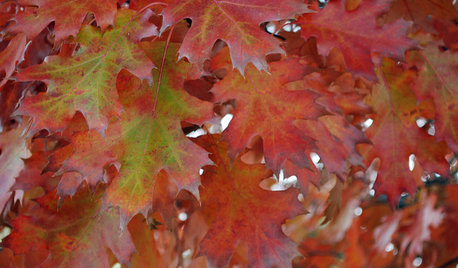



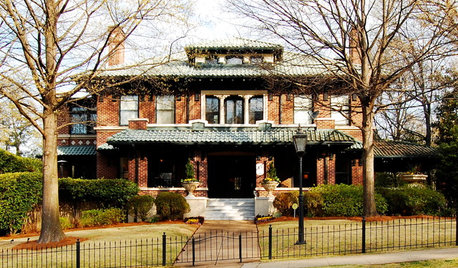
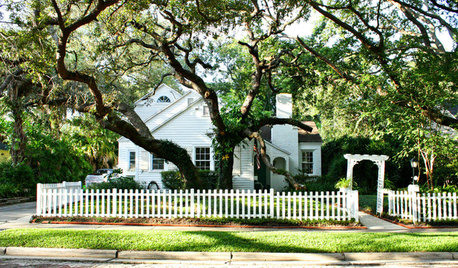
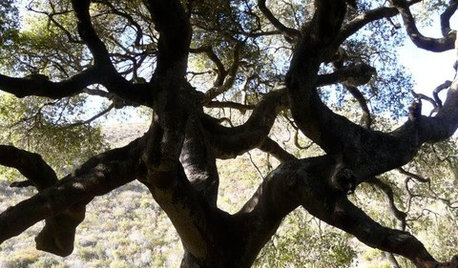
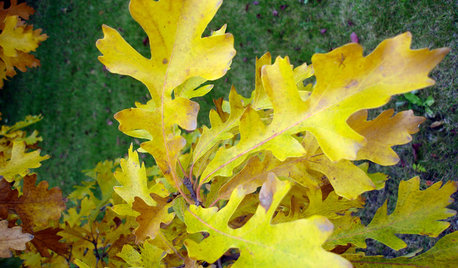







Lloyd